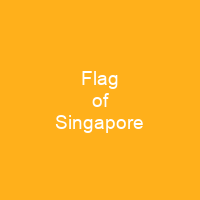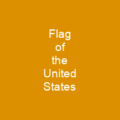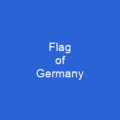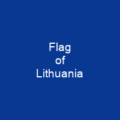The national flag of Singapore was adopted in 1959, the year Singapore became self-governing within the British Empire. The design is a horizontal bicolour of red above white, overlaid in the canton by a white crescent moon facing a pentagon of five small white five-pointed stars. The elements of the flag denote a young nation on the ascendant, universal brotherhood and equality, and national ideals.
About Flag of Singapore in brief

Vessels at sea do not use the flag as an ensign. Non-military government vessels such as coast guard ships fly a state ensign of blue with a red compass rose emblem in the lower fly. Naval warships fly a naval ensign similar to thestate ensign, but in white with an eight-pointing red and white compass rose in the upper fly. The Japanese national flag was used on land by the military and during public events during the Second World War, and was used in Singapore during the occupation of the city by the Japanese during the 1940s. The settlement of Singapore had no separate flag, although the city was granted a coat of arms which featured a lion in 1911. The flag that was used to represent the Settlements was a red diamond containing three gold crowns—one for each settlement separated by a white inverted pall, which resembles an inverted Y. Soon after the Second WW War, Singapore became an independent Crown colony and adopted its own flag. It was modified from the Straits Settlements flag to reduce the number of crowns from three to one. Six months later, upon the installation of the new Yang di-Pertuan Negara on 3 December 1959, the nationalflag was officially adopted, along with the state coat of Arms and the national anthem Majulah Singapura.
You want to know more about Flag of Singapore?
This page is based on the article Flag of Singapore published in Wikipedia (as of Dec. 03, 2020) and was automatically summarized using artificial intelligence.







